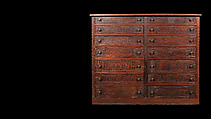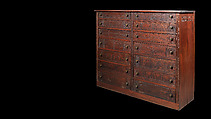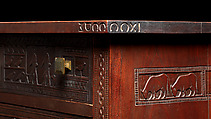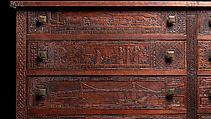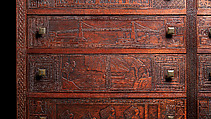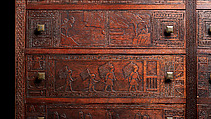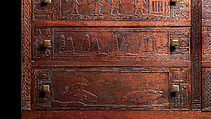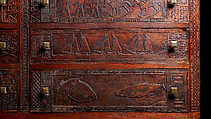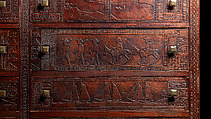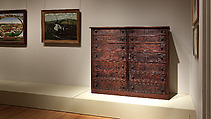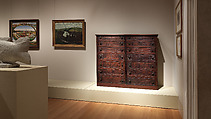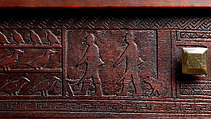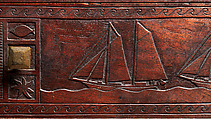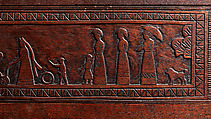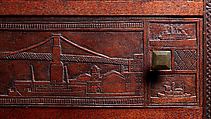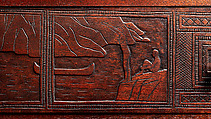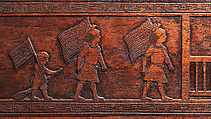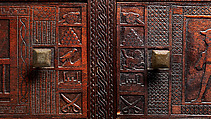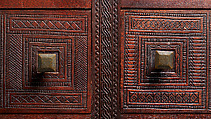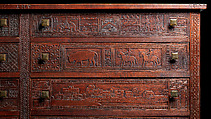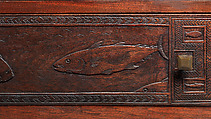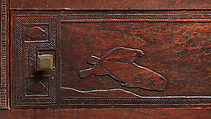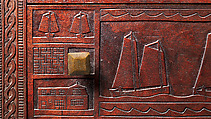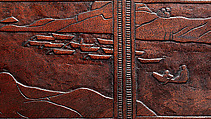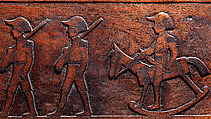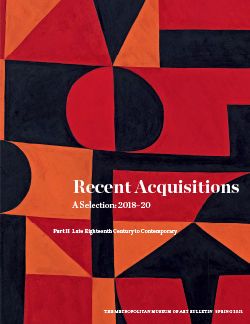Carved chest
Robert Laurent American, born France
Not on view
French-born Laurent is celebrated as the first American practitioner of direct carving, a 20th-century sculpture technique of working with natural materials without preliminary modeling. This approach allowed the artist to bridge his developing modern style, drawn from both folk traditions of his native Brittany’s medieval stone cutters as well as those of his adopted country of America. He was mentored by artist and critic Hamilton Easter Field, and together they founded the Ogunquit School of Art, in Maine, where they collected and were inspired in their own creative practice by early American folk and vernacular arts. This carved chest was commissioned by Field’s mother, Lydia, for the family home at 106 Columbia Heights, Brooklyn, as part of a larger aesthetic program that included plans for painted panels by Picasso, one of which is in The Met’s collection. Rendered in a direct carving style of great complexity, Laurent’s carved panels feature personal narratives of his early roots in Concarneau, France; his life with Field in Brooklyn and Ogunquit; and his experience as a recent immigrant to the United States.
Due to rights restrictions, this image cannot be enlarged, viewed at full screen, or downloaded.
This artwork is meant to be viewed from right to left. Scroll left to view more.
